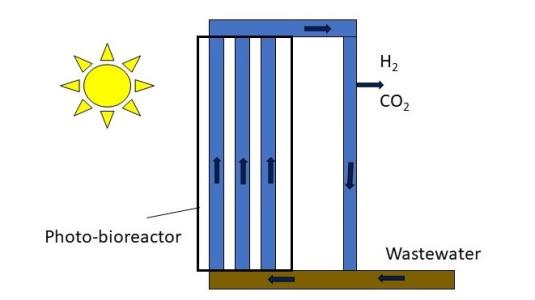Purple-B - Hydrogen production from immobilized cells in photo-bioreactors

The idea concerns a new photo-bioreactor that contains bacteria immobilized on solid substrate. Some red bacteria, like Rhodopseudomonas palustris, are able to produce gaseous hydrogen from water using only light as energy source through the so-called anaerobic photosynthesis. Moreover, these bacteria degrade organic contaminants contained in the water to carbonic acid and hydrogen photo-evolution. CO2 can be recovered from the water and eventually sent with Hydrogen to biomethane production by Sabatier reactor.
In comparison with plants, these bacteria are able to use a wider range of light wave spectrum, including IR light, and they produce high amounts of hydrogen using very small amounts of water. The reactor is made of a tube bundle: in each transparent tube reactor, water is continuously flown and hydrogen easily separated after production. The viable “resting” cells of photobacteria are immobilized on solid and various geometrics transparent substrates (e.g. alginate, agar agar) thus they cannot proliferate making the system stable over time.
The installation of these reactors on a spaceship can allow the hydrogen production as well as to treat wastewater compounds (P, NH3, C) produced on board. The main advantages of the proposed solution thus are: high amount of hydrogen produced, low amount of water required and disposal of organic wastewater.
